 Kids' Club Spanish School, LLC
https://kidsclubspanishschool.com/wp-content/uploads/2024/07/blog_summer-spanish-activities-for-kids-3.png
807
800
Alexis Fishbaugh
https://cdnwp.kidsclubspanishschool.com/wp-content/uploads/2025/05/kids-club-spanish-school-header-logo.webp
Alexis Fishbaugh2024-07-28 22:48:532024-07-28 22:48:53Summer Spanish Activities for Kids
Kids' Club Spanish School, LLC
https://kidsclubspanishschool.com/wp-content/uploads/2024/07/blog_summer-spanish-activities-for-kids-3.png
807
800
Alexis Fishbaugh
https://cdnwp.kidsclubspanishschool.com/wp-content/uploads/2025/05/kids-club-spanish-school-header-logo.webp
Alexis Fishbaugh2024-07-28 22:48:532024-07-28 22:48:53Summer Spanish Activities for KidsSPANISH FOR CHILDREN
How To Teach Your Child Spanish If You Don’t Speak It
Learning a foreign language is an important part of a child’s education in many aspects. Not only does it have many mental health benefits like improving memory, being more creative, better at solving complex problems, and scoring higher on standardized tests but it also greatly improves their future job prospects. So overall a huge win. We also know that learning a second language at a young age is the best time to learn as children are like little language learning geniuses at this time in their life, soaking it up like a sponge.
Consistency is the Key
Not much more is needed to convince a parent that learning a second language should be on their child’s “To Do” list; however, even though learning a language for a child is relatively easier than it is for an adult, it still takes hard work, dedication and above all consistency is key. The learner must be consistently exposed to the language in their daily lives to be able to gain fluency.
Ms. Kawasaki: “Welcome to Tokyo.”Bob: “Thank you very much.”Ms. Kawasaki: “My name is Kawasaki. Nice to meet you.”
Bob: “I’ve heard of you. Thank you.”
– Bill Murray in Lost In Translation
So how does a parent provide this exposure for their child? The obvious answer would be to speak the language constantly at home among the family members. Problem solved… the child would learn every day activities in the target language and have consistent exposure to it. This works fine for many families such as mine, who live in a country whose official language is different from that of the parents’. For example, I live in Spain, but I was born and raised in Iowa. I have a fifteen-month old son who I speak to in English. My son is learning Spanish from my In-Laws and my husband and he learns his “foreign” language from me. This answer doesn’t work so well when the parents only speak one language and it is the same language as the official language of the country in which they live. So how does one help their child learn a second language when they themselves do not speak one?
“Even though learning a language for a child is relatively easier than it is for an adult, it still takes hard work, dedication and above all consistency is key.”
Why Spanish?
Due to my position as an American living in Spain, and on the way to having a bilingual child, I get told from my American friends, who are also parents, that they too would love their child to speak two languages like my son. But how can they go about it if they don’t speak another language? I thought I’d write this blog to help those who have the deep desire for their children to learn a second language, but yet do not speak one themselves, and I thought I’d focus on learning Spanish for a few reasons. The first one being, as a mom living in Spain, I am able to recommend quite a few resources. The second one, being the fact that many of the people I have come into contact with mention Spanish is their target language. Thirdly, as one of the founders of Kids’ Club Spanish School, I can talk with some authority on the subject. And finally, Spanish is one of the most spoken languages in the world so I understand that it would be of interest to many of the readers.
“Language is the road map of a culture. It tells you where its people come from and where they are going.“– Rita Mae Brown
The Four Foundational Skills – Building the Foundation to Your Child’s Language Learning
You can’t build much of anything without a foundation, and the same goes for language skills. Reading, Listening, Writing and Speaking are the four skills that need to be consistently practiced in order to build fluency in a language and the resources given below will help your child practice these skills.
1. Foundation Skill for Listening for Spanish for Children
There are some great resources to help your child practice their listening skills in Spanish. Nowadays, our children, who are known as “Digital Natives”, a term used to describe children who have grown up after the widespread adoption of digital technology, really thrive at learning when their yearning for media rich content is met. This is one of the reasons why Youtube, and other streaming services, are great tools to take advantage of when learning Spanish.
Our children love cartoons and they love watching streaming videos. Putting these two things together create a great way to start their Spanish language learning journey. Many of us put a cap on computer time for our children but yet we are usually pressured by them to allow them to have more time. A great way to encourage them to be consistent with listening to Spanish is to allow them more computer time, as long as they watch a cartoon online in Spanish for children. Of course, this has to come with a structured plan for learning so I am going to detail this below.
They could be allowed an extra 30 minutes of computer time with the compromise that they will watch a cartoon in Spanish for children (I will put a few links below for you to let them choose). Tell them that they will have to pay close attention to the images in order to give you a summary at the end of what they saw. You may say “But my child doesn’t speak ANY Spanish. How will they be able to give me a summary of what they saw?”. Well the summary doesn’t have to be correct, it just needs to be what your child believes to have happened based on the images they saw. After watching more and more episodes, they should be able to pick up words, little by little, and be able to come closer to a more truthful summary.
Also, while watching the cartoon, they should pick out a few words they want to learn. For example, if they are seeing a cat who is chasing a mouse who dropped their cheese, maybe they want to learn how to say cat, mouse, chase and cheese in Spanish. These are words that they will be hearing in the cartoon so it would be good for your child to recognize them. Together, you can look up these words on different translating sites such as Word Reference. These words will stay with them as they continue to hear them throughout the next episodes.
In this activity your child is getting great listening practice and learning vocabulary. This is actually the way your child learned a lot of their native language so why not use it as a resource for them to pick up Spanish?
Some suggestions of cartoons in Spanish for kids to get started are: La Ratita Presumida, Los Tres Cerditos, Cleo y Cuquin, Los Tres Ositos, and Book Box Spanish.
If you have Netflix you can also put on your child’s favorite cartoons in Spanish by changing the language. Here Netflix language settings is a link to some instructions to change the audio or even search for shows that were created originally in Spanish.
“Youtube, and other streaming services, are great tools to take advantage of when learning Spanish.”
2. Foundation Skill for Reading Spanish for Children
The obvious answer to building this foundation skill is by having your child read books in Spanish for children. This is a great way for them to expand their vocabulary and internalize the language they have already learned. However, it can be very difficult to get a young child to start reading in a language they don’t yet speak so below I am going to give you some great resources for texts for young learners of a second language.
A great way to ease into reading in Spanish for kids is to start with some dual language books that are written in both languages. This way your child doesn’t get frustrated by too many words they can’t understand. Little Linguist has some great title suggestions. Reading is great because many parents read to their children before going to bed. With this method all you would have to do is substitute the nightly reading sessions with these Spanish books. Reading them together would be a great way to learn the language.
One Third Stories are stories for 4-9 year olds, mostly written in English but that gradually introduce Spanish vocabulary and sentences. Once a month you get a story box that contains a book, activities and games that teach a variety of Spanish words. The pack is quite complete.
Here is a great review of some books that are great for young learners who are absolute beginners to the Spanish language. Spanish-books-for-kids-baby-toddler-child-teen.
“Sleep is good, he said, and books are better.”– George R. R. Martin
3. Foundation Skill for Writing Spanish for Children
Reading and listening are “input” components of language learning and are all about absorbing language that has already been produced. In a way, you are a consumer of the language. However, in order to communicate well in a second language, you need to be able to create the language and communicate it to others.
Writing is considered an “output” component to language learning. When writing, your child will be the one producing the language. They will take the time to think about their words, look up words they need to communicate their ideas and therefore add words to their repertoire. This takes their language learning from a passive role (listening and reading already produced language), to a more active role by being the ones that actually produce it. This will improve their Spanish language learning exponentially.
In the very beginning it may be hard to get your child to actually be able to write something as their vocabulary will be very limited. However, using the list of vocabulary they have accumulated by watching cartoons and reading books, you can assign them, in the beginning, very simple writing tasks. Let’s take the cat, mouse, cheese and chase vocabulary that they hypothetically learned watching cartoons. You could assign a writing task where they draw a picture of the scene of the cat chasing the mouse with the cheese and simply have them write the sentence in Spanish for “A cat chases a mouse eating cheese”. Just getting them to write the words to vocabulary they have learned is a great way for them to produce the language. Drawing pictures to go along with it taps into children’s desire to be creative. Little by little they will have a larger pool of resources to pull from in order to do their writing tasks. It could also be fun to sit with them while they are writing and look up words together in a dual language dictionary.
“A different language is a different vision of life.”– Federico Fellini
4. Foundation Skill for Speaking Spanish for Children
Speaking is another “output” component of the language. It might be a bit difficult to introduce this component into your child’s language learning journey if you do not speak the language yourself. There are a variety of things you can do to try and get your child to output the language in a conversational way. For example, after your child has learned the word for shoes in Spanish, zapatos, it could be a good idea to no longer use the English word “shoes” anymore in your daily conversations but to substitute it with “zapatos”. This can be done with any and all vocabulary and sentence structures learned. Instead of asking your child to tie their shoes, you can ask them to “tie their zapatos”.
Even though the above can be a really fun way to incorporate Spanish in your every day lives, and really reinforce what has been learned, your child will eventually need to have more advanced conversations. How can you go about providing this for them if you do not speak the language? Here are a few options.
Join social groups for Spanish speaking parents and arrange play dates so your children can play together using Spanish. If you don’t speak the language you want your child to learn, finding exposure to that language is a priority. Try to find people who speak your target language. There are many groups on social media these days. Providing your child with opportunities to speak Spanish can be as easy as searching for a Spanish parents’ group and arranging meet-ups so your children can play together.
Another really great way to get your child speaking is by hiring a Spanish speaking nanny or Au Pair. There are many different websites, for example http://aupair.com/, that can help you look for young people living abroad who want to travel to the United States to learn English and who are willing to be Au Pairs for families in order to do this. Your family could host an Au Pair from Spain, for example, with the exchange that they take care of your child during the day speaking only in Spanish. Evenings and weekends the Au Pair can be free to roam your city to meet friends and practice their English. On top of having a Spanish tutor for your child you will receive flexible, affordable, live-in child care. Who could want more?
“Join social groups for Spanish speaking parents and arrange play dates so your children can play together using Spanish.”
As a co-founder of Kids’ Club Spanish School, you would of course expect to hear about this online language learning platform in this blog. Kids’ Club Spanish School uses the N2N method (native to native) to bring native Spanish speaking teachers together, using their online videoconferencing and “virtual” classrooms, with digital native children. This gives children a phenomenal way to practice their speaking skills as the standardized classroom material is developed so that the children are speaking from day one, 100% in Spanish with their teacher in a conversational and fluid manner. The Kids’ Club Spanish School program is an immersive program that guarantees to captivate the children’s attention making the absolute most out of class time. There is no better way to get your child learning Spanish than being able to use it with a native teacher who is trained in young learner education.
Many parents understand what learning a second language can bring to their child but are overwhelmed by how to go about providing learning opportunities when they themselves do not speak Spanish. I hope this blog has helped you see that it isn’t as hard as it seems to provide these opportunities. What is important is having dedication and consistency in your approach. Making sure your child is consistently exposed to Spanish in their daily lives is not as hard as it may seem!
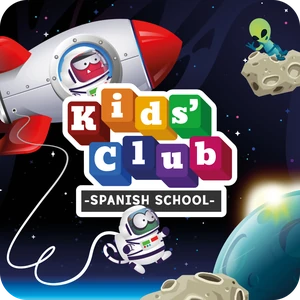
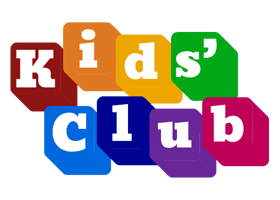
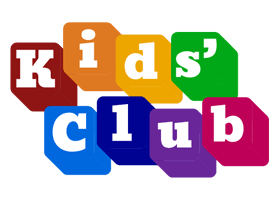

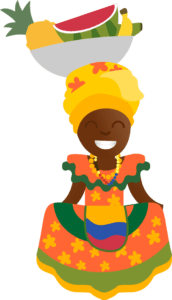

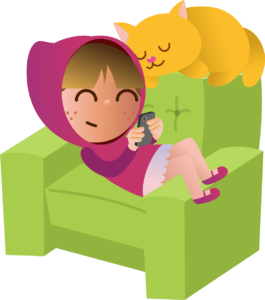

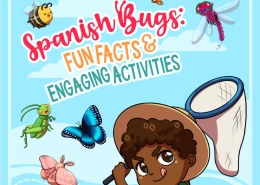 Kids' Club Spanish School, LLC
Kids' Club Spanish School, LLC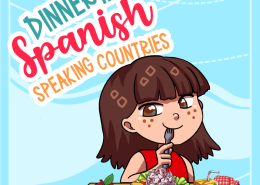 Kids' Club Spanish School, SL
Kids' Club Spanish School, SL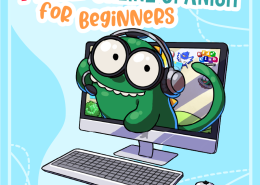 Kids' Club Spanish School, LLC
Kids' Club Spanish School, LLC

